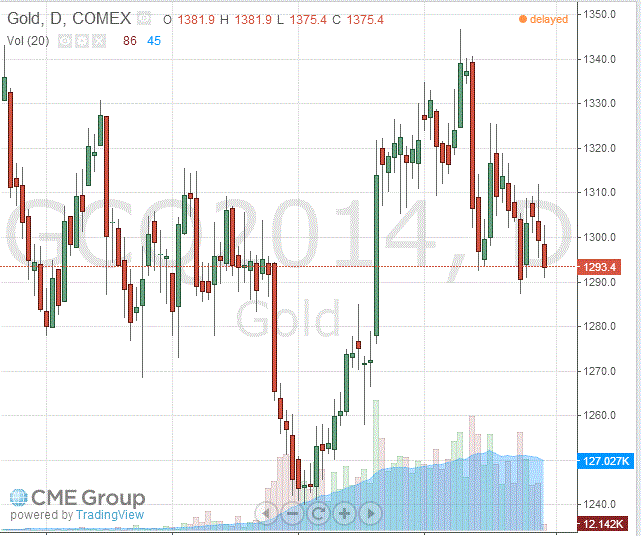- Gold: an overview of the market situation
Notícias do Mercado
Gold: an overview of the market situation
The price of gold fell today, while dropping below the psychological level of $ 1,300 per ounce, as strong economic data outweighed the purchase on the background of geopolitical problems.
The U.S. Commerce Department announced that gross domestic product expanded at a seasonally adjusted annual rate of up to 4.0% in the second quarter. Economists had forecast an increase of 3.1% for the quarter. The rise in stocks and acceleration in consumer spending led to widespread growth and leveled a lot of resistance from increased imports. Growth has replaced the first quarter, when the economy contracted by 2.1%. While this was the worst quarter in the current recovery, this figure reflects an upward revision from the previously estimated 2.9% reduction. The economy grew by about 1% during the first half of 2014. Annual changes published on Wednesday, showed that the economy also expanded by 4% in the second half of 2013, it is the best indicator for the six months to 10 years.
Experts note that the latest data reinforce the arguments in favor of accelerated clotting program to stimulate the economy and the earlier-than-expected rise in U.S. interest rates. Now the focus of the Fed's decision on monetary policy, which will be announced tonight. The Committee is expected to announce more QE minimize the program to $ 10 billion to $ 25 billion. Earlier this month, the Federal Reserve Janet Yellen noted that U.S. interest rates may rise sooner if the recovery in the labor market will continue.
"Nobody wants to hold long positions in gold now, when the Fed, according to most people inclined to tighten policy sooner rather than later," - said Frank Lesh, broker FuturePath Trading.
Demand for gold is still supported, as tensions between Russia and the West in relation to the situation in Ukraine remains high, while the fighting between Israel and Hamas militants in Gaza also remain in the spotlight.
The cost of the August gold futures on the COMEX today fell by $ 4.6 - to $ 1293.40 per ounce.
